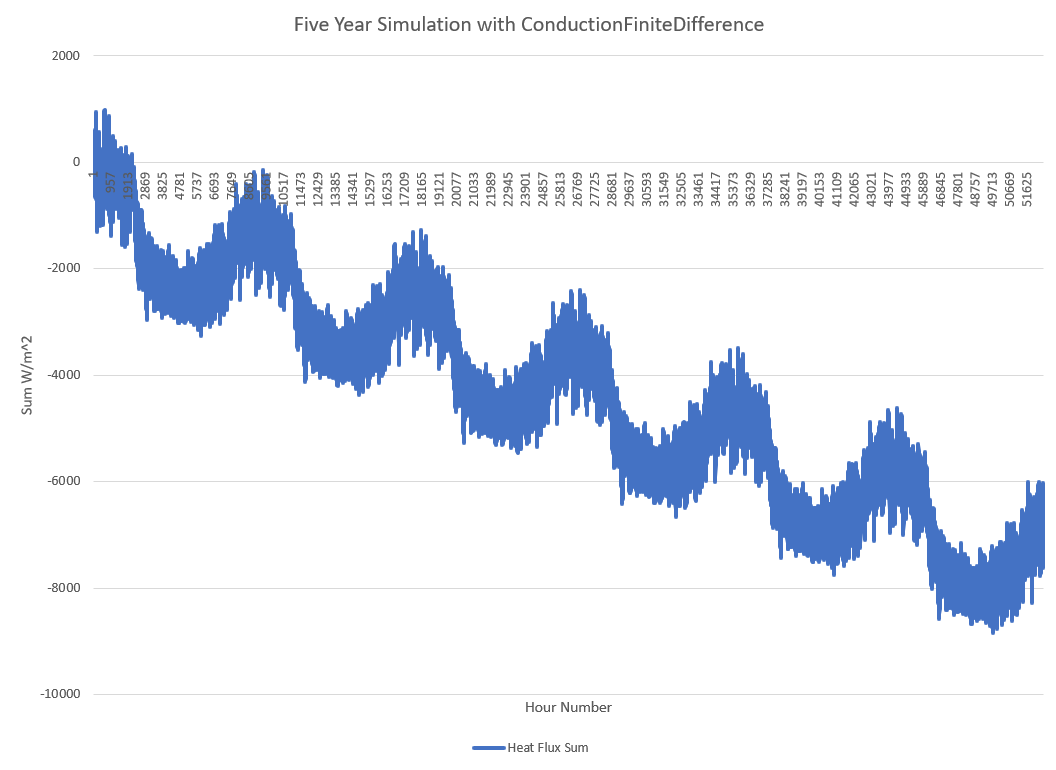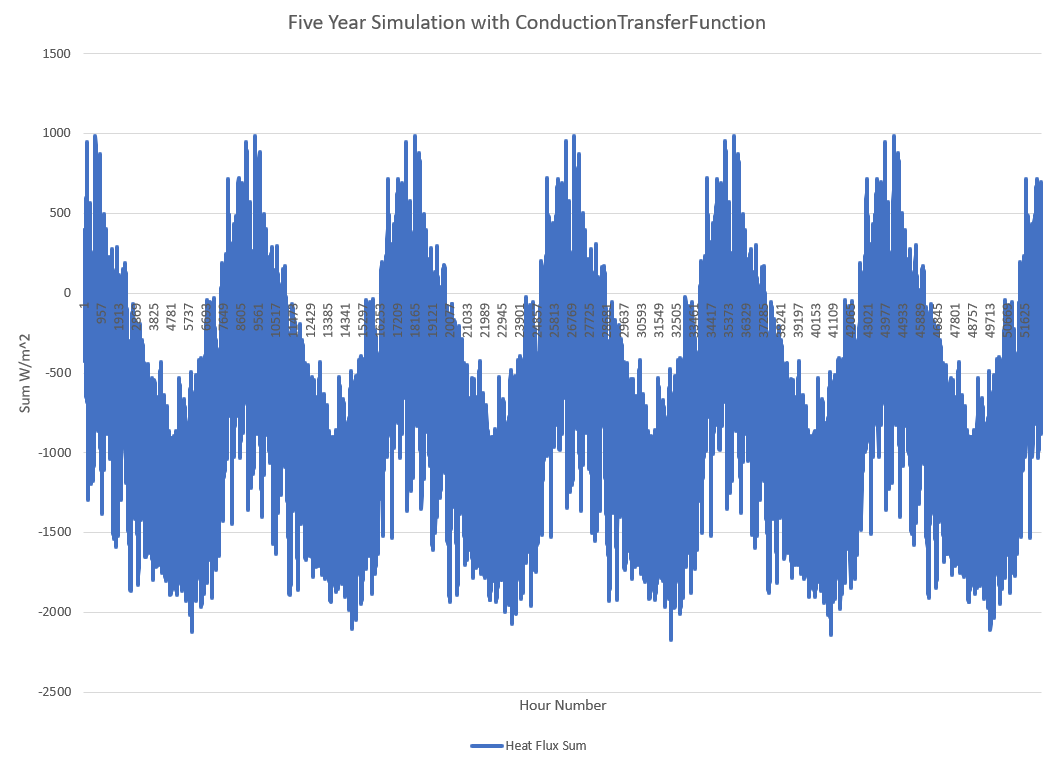Heat fluxes through wall not matching, leading to cumulative heat gain over annual simulation
Hello all, I’m performing some modeling to look at the heat transfer through wall sections as well as determine the temperatures of the internal and external wall surfaces. I am currently having the model output the internal and external surface temperatures and conduction heat transfer rates. I initially noticed that the fluxes do not match and assumed it was some sort of thermal storage created by the wall materials warming/cooling. I then began inspecting the surface heat storage rate per area to see if they would all add up. The good news is that for each hour, the fluxes and the heat gain do all sum to zero (Figure 1: Heat flux table JPEG in drive folder). The bad news is that when I look at the heat gain of the wall over the course of the annual simulation, the heat gain in the wall climbs over time, where I would expect it to bounce around 0 as it stores/dissipates over time (Figure 2: Cumulative Heat Gain JPEG in drive folder). This could potentially make sense if the wall was slowly warming up over time but the surface temperatures do not suggest this. Is there something I am missing to explain how the wall is storing energy over time but the temperature is not increasing.
Notes: All analysis was performed on the Occupied Zone East Wall. Files are located in the linked drive folder(Energy plus files, Weather file, Excel file with representative days for each season (winter, shoulder, summer), figures)
Google Drive: https://drive.google.com/drive/folder...






